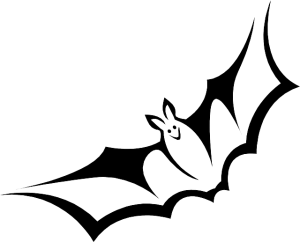 Bats are fascinating creatures, but they’re much more enjoyable when admired outdoors, not inside your home. While many people aren’t aware of bats nesting in their attic or walls, these nocturnal visitors can bring health risks and cause damage if left unchecked. Knowing how to identify the signs of a bat infestation early can help prevent further problems down the road. Here’s a guide to spotting bats in your home and what you can do if they’ve already moved in.
Bats are fascinating creatures, but they’re much more enjoyable when admired outdoors, not inside your home. While many people aren’t aware of bats nesting in their attic or walls, these nocturnal visitors can bring health risks and cause damage if left unchecked. Knowing how to identify the signs of a bat infestation early can help prevent further problems down the road. Here’s a guide to spotting bats in your home and what you can do if they’ve already moved in.
Signs Bats Might Be Nesting in Your Home
- Strange Noises Bats are nocturnal, so if you hear squeaking, scratching, or fluttering sounds at night, particularly around the attic or walls, it’s a red flag. The noise is usually more noticeable after dusk when bats leave their roost to hunt for insects.
- Bat Droppings Bat droppings also known as guano look like small, dark pellets and tend to accumulate near entry points like windows, vents, or gaps in your roofline. Bat guano also has a musty odor and may appear in piles in attics or even around the exterior of your home. Be cautious, as bat droppings can harbor harmful pathogens.
- Grease Stains Bats have oily fur, and when they repeatedly enter and exit your home through small openings, they often leave behind dark, greasy marks. These stains can be found around vents, eaves, or cracks they use as access points.
- Visible Bats If you notice bats flying around your property regularly during the evening or spot them emerging from your attic, you likely have a nesting colony. Sometimes, you may see a bat or two flying around indoors, which can indicate a more significant problem.
What to Do if You Have a Bat Infestation
If you suspect or confirm bats are nesting in your home, it’s essential to act responsibly. Bats are a protected species in many areas due to their vital role in ecosystems, so removal should be handled professionally.
- Contact a Wildlife Specialist Bat removal is delicate work. A professional wildlife control expert can assess the situation and use safe, humane methods to evict the bats. This often involves exclusion, which allows bats to leave but prevents them from re-entering your home.
- Seal Entry Points Once the bats are safely excluded, seal off any gaps or cracks larger than a quarter-inch to prevent a re-infestation. This could include repairing damaged shingles, flashing, or vents.
- Clean and Disinfect Bat guano can pose health risks, so proper cleaning and disinfection are crucial. Some professionals offer this service, or you can tackle it yourself using personal protective equipment.
With timely action and a careful approach, you can restore your home and prevent future infestations, ensuring bats stay outside where they belong.








